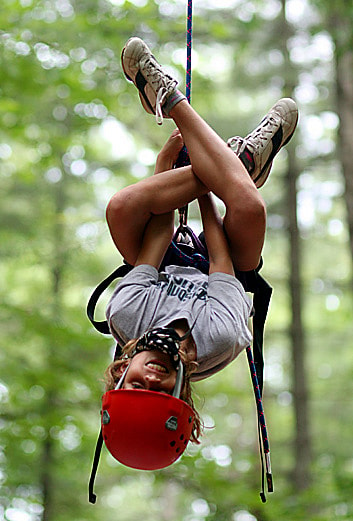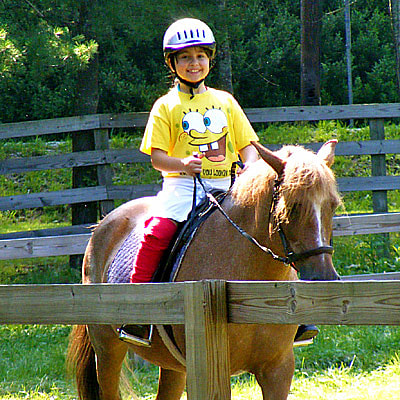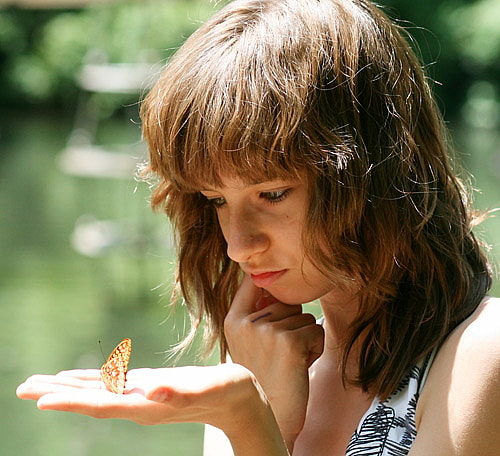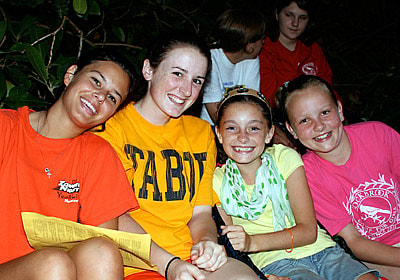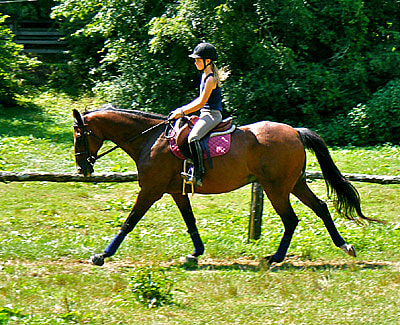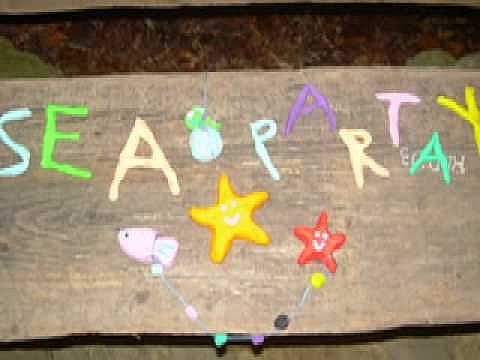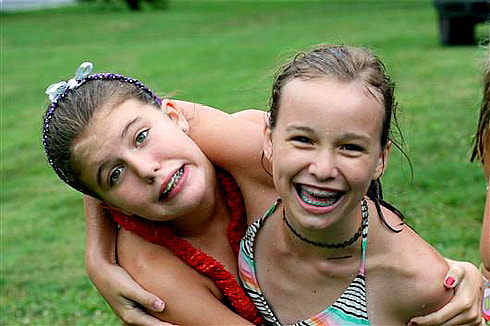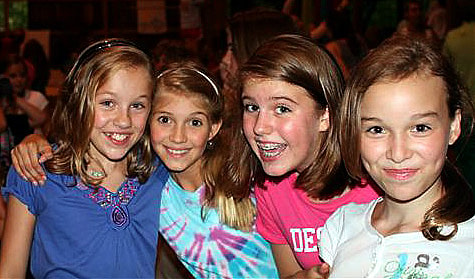When girls first begin to learn rock climbing at Rockbrook, they start on our high ropes course climbing tower. It’s an “Alpine Tower” and you may have seen photos of it before here. It’s really the perfect place to learn how to climb because it makes so many different elements of “real rock climbing” so accessible. The girls can quickly learn important safety principles like the belay commands. They can begin to feel comfortable using the basic rock climbing gear like the harness, helmet, carabiner and rope. And, they can actually climb! A lot! The Alpine Climbing Tower provides close to 100 different ways to climb to the top; there are poles, nets, ropes, cables, climbing holds and rock walls to allow a whole range of difficulties and challenges. Girls can sign up for climbing instruction every week at camp and climb a couple of different routes every time they come!
But what do you learn when you first start out rock climbing? The importance of stretching and warming up is a good start. Everyone does better if they are flexible and a little stronger after warming up. After that the first lesson emphasizes the importance of balance, of being able to hold still balancing on one foot, for example, and moving the other leg or arms to reach a certain spot. Next, the girls learn footwork is central to rock climbing. It’s not mainly about finding grips for your hands, but rather about learning to use your feet and legs to move up the rock. Your hands and arms mainly help with balance, and your legs keep you moving. The other beginning rock climbing lesson to learn is more mental than physical. It’s learning to stay calm and focused. Rock climbing is a series of puzzles that requires concentration, and a calm, clear attention to details the rock presents. If you aren’t relaxed on the rock and get in a hurry, you might miss a hold or skip right over the perfect foothold making your route more strenuous and less enjoyable.
All of these lessons can take some practice to master, but there’s so much rock climbing going on at Rockbrook, the girls easily learn them. It’s really not hard to learn how to rock climb at camp, and the girls love it!

